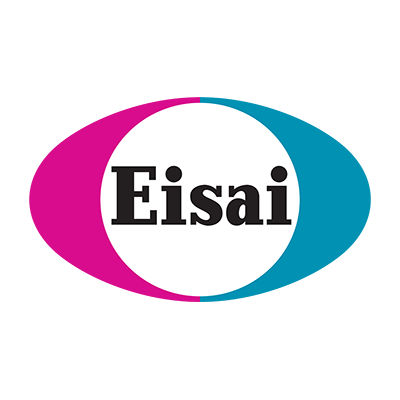预约演示
更新于:2025-05-07
Onychomycosis
甲癣
更新于:2025-05-07
基本信息
别名 Dermatophytic onychia、Fungal infection of claw、Fungal infection of nail + [42] |
简介 A fungal infection of the nail, usually caused by DERMATOPHYTES; YEASTS; or nondermatophyte MOLDS. |
关联
59
项与 甲癣 相关的药物作用机制 fungal CYP51A1抑制剂 |
最高研发阶段批准上市 |
首次获批国家/地区 美国 |
首次获批日期2022-04-26 |
靶点 |
作用机制 CYP51A1抑制剂 |
原研机构 |
非在研适应症 |
最高研发阶段批准上市 |
首次获批国家/地区 日本 |
首次获批日期2018-01-19 |
作用机制 fungal CYP51A1抑制剂 |
在研机构 |
非在研适应症- |
最高研发阶段批准上市 |
首次获批国家/地区 美国 |
首次获批日期2014-06-06 |
249
项与 甲癣 相关的临床试验NCT06689852
MULTICENTRIC, RANDOMIZED, EVALUATOR BLINDED CLINICAL INVESTIGATION for the EVALUATION of EFFICACY and SAFETY of TWO PRODUCTS for the TREATMENT of ONYCHOMYCOSIS
The efficacy and safety of ENRICHED (X92001591) will be evaluated in a multicentric, randomized, evaluator blinded clinical investigation in 88 patients.
开始日期2024-11-01 |
申办/合作机构 |
NCT06775496
Life-threatening Infection in Humans: from Epidemiological Analysis to Molecular Genetics
This study, aims to identify and calculate the prevalence of cases potentially associated with congenital errors of immunity (ECI) among patients, hospitalized with infectious disease and carry out their clinical-laboratory characterization. Diagnoses of ECI are becoming increasingly common, by virtue of the continuing discoveries of new disease-causing genes and an increasing understanding of the clinical signs and symptoms of these entities.
The most important challenge still remains to achieve early diagnosis, which is essential for appropriate and individualized treatment that also takes into account the prognostic and genetic counseling aspect related to these disorders, which are associated with high rates of morbidity and mortality.
Patients with nonimmunological diseases, secondary immunodeficiencies, nonpharmacological iatrogenic factors, and immunosuppressive drug therapies will be involved in the study.
The most important challenge still remains to achieve early diagnosis, which is essential for appropriate and individualized treatment that also takes into account the prognostic and genetic counseling aspect related to these disorders, which are associated with high rates of morbidity and mortality.
Patients with nonimmunological diseases, secondary immunodeficiencies, nonpharmacological iatrogenic factors, and immunosuppressive drug therapies will be involved in the study.
开始日期2024-10-01 |
NCT06175013
Prospective, Monocentric, Randomized, "Evaluator Blinded" Clinical Investigation to Evaluate the Efficacy and Safety of a Combination of Two Medical Devices and One Device Use in the Treatment of Toenail Onychomycosis
The goal of this clinical investigation is to evaluate the efficacy of the tested products in medium to moderate onychomycosis after 112 days of treatments.
The main question it aims to answer is the effectiveness of the use of a combination of two investigational devices (Sérum PURIFIANT + Sérum BOOSTER) on the percentage of healthy nail surface after 112 days of treatment.
Participants will apply one or two devices on the affected toenail during the study.
* Patients included on the groupe 1 will use Sérum PURIFIANT only, twice daily.
* Patient included on group 2 will use Sérum PURIFIANT, twice daily associated with Sérum BOOSTER twice weekly.
For this investigation, 44 patients (22 patients per group) presenting at least one infected toenail will be included to reach this objective.
The main question it aims to answer is the effectiveness of the use of a combination of two investigational devices (Sérum PURIFIANT + Sérum BOOSTER) on the percentage of healthy nail surface after 112 days of treatment.
Participants will apply one or two devices on the affected toenail during the study.
* Patients included on the groupe 1 will use Sérum PURIFIANT only, twice daily.
* Patient included on group 2 will use Sérum PURIFIANT, twice daily associated with Sérum BOOSTER twice weekly.
For this investigation, 44 patients (22 patients per group) presenting at least one infected toenail will be included to reach this objective.
开始日期2024-09-01 |
申办/合作机构- |
100 项与 甲癣 相关的临床结果
登录后查看更多信息
100 项与 甲癣 相关的转化医学
登录后查看更多信息
0 项与 甲癣 相关的专利(医药)
登录后查看更多信息
4,099
项与 甲癣 相关的文献(医药)2025-05-01·Contact Dermatitis
Occupational Dermatoses in Parachute Riggers: A Cross‐Sectional Observational Study
Article
作者: Kothari, Rohit ; Kumar, Rahul ; Sashindran, V. K.
2025-05-01·Journal of the American Academy of Dermatology
Infrequent laboratory abnormalities during terbinafine therapy for onychomycosis: A retrospective cohort analysis within an integrated health system
Article
作者: Wu, Xinxie ; Miller, Michael J ; Wenk, Kurt S
2025-05-01·Annales Pharmaceutiques Françaises
Amorolfine hydrochloride loaded solid lipid nanoparticles: Preparation, characterization and ex vivo nail permeation study to treat onychomycosis
Article
作者: Shanthi, Nithya ; Mahato, Arun Kumar ; Ahmed, Tasleem
97
项与 甲癣 相关的新闻(医药)2025-04-11
For additional information, please contact: Anna Ljung, CEO, telephone: +46 70 766 60 30, e-mail: anna.ljung@mobergpharma.se Mark Beveridge, VP Finance, Phone: +46 76 805 82 88, e-mail: mark.beveridge@mobergpharma.se
About this information The information was submitted for publication, through the agency of the contact person set out above, on April 11, 2025, at 8.00 am CET.
About Moberg Pharma, www.mobergpharma.com Moberg Pharma AB (publ) is a Swedish pharmaceutical company focused on commercializing proprietary innovations based on drug delivery of proven compounds. The company’s drug MOB-015 is a novel topical treatment for onychomycosis (nail fungus) with market approval in 13 EU countries. MOB-015 is sold in Sweden and Norway under the brand name Terclara® and is available at all pharmacy chains. Phase 3 clinical trials for MOB-015 involving more than 800 patients indicate that the product has the potential to become the future market leader in onychomycosis. Moberg Pharma has agreements with commercial partners in place in various regions including Europe and Canada. Moberg Pharma is headquartered in Stockholm and the company's shares are listed under Small Cap on Nasdaq Stockholm (OMX: MOB).
临床3期上市批准
2025-03-22
·学术经纬
▎药明康德内容团队编辑
真菌感染十分常见,像俗称“灰指甲”的甲癣,导致“脚气”的足癣,75%的女性一生中可能会遇到的阴道念珠菌病,都是由致病真菌引发的感染。此外,一些侵袭性真菌还可能有致命危险,尤其是影响重病患者和具有严重免疫系统相关基础病症的患者,例如癌症、艾滋病、肺结核等患者。
根据世界卫生组织(WHO)在2022年发布的“重点真菌病原体”清单,有19种侵袭性真菌对公众健康构成重大威胁,每年直接造成130万人丧生。这些真菌病原体不仅变得越来越普遍,而且对现有的抗真菌药物治疗产生的耐药性日益增强,因此亟需研发新型抗真菌药物。
本周,顶尖学术期刊《自然》发表的一项新研究宣布,人类对抗多重耐药真菌取得了重要突破!由中国药科大学王宗强教授联合山东大学药学院尚卓教授领衔的研究团队,从微生物基因组中挖掘并生物合成出一种新的化合物mandimycin,能够以不同寻常的新机制杀灭多重耐药真菌。
在自然界中,细菌和真菌之间的“战斗”已延续数十亿年。很多细菌演化出了抑制或杀死真菌的小分子产物,真菌则会发展出抵抗策略来适应,于是细菌又会继续“迭代”其抗生素生物合成的基因……在这种共同演化中产生的一些天然产物被人类开发为抗真菌药物。
然而传统的抗真菌药物开发策略,例如测试环境样本中发现的自然产物的活性,带来的回报越来越少,因为这些尝试通常导致重新发现与已知靶点结合的化合物。
新研究中,王宗强教授带领团队通过挖掘微生物基因组中的生物合成基因簇,突破了基于活性筛选的传统研发瓶颈,找出了多烯大环内酯家族能够与不同靶点结合的新成员。
多烯大环内酯类(polyene macrolide)抗生素结构多样,具有强效、广谱的抗真菌活性,且不易产生耐药性。临床上常用的多烯大环内酯类抗生素(如两性霉素B)含有海藻糖胺(mycosamine),该结构基序是此类化合物具有抗真菌活性的关键。
基于这一特点,研究团队首先构建了一个庞大的数据库,包含316123株细菌的基因组,从中收集到170多万条次级代谢产物生物合成基因簇信息,然后通过基因挖掘技术筛选出编码了含海藻糖胺的多烯大环内酯类的生物合成基因簇。研究者由此发现,其中一个基因簇(mand基因簇)似乎与其他编码多烯大环内酯的基因簇演化得十分不同,处在一个特殊的演化分支上。随后,研究人员通过组合生物合成技术,获得了该基因簇的生物合成产物,即mandimycin。
▲mandimycin的发现与表征(图片来源:参考资料[1])
研究发现,mandimycin是一种作用方式全新的多烯大环内酯类抗生素分子。该家族里已知的化合物都是结合真菌细胞膜上的麦角固醇(ergosterol)起作用,mandimycin却能结合真菌细胞膜的各种磷脂,导致真菌细胞“泄漏”必需的离子。这一独特的模式意味着,mandimycin不仅具有强大的抗真菌活性,还能有效针对那些已耐受麦角固醇靶点抗真菌剂(如两性霉素B)的真菌病原体。
论文中,研究作者用动物皮肤感染、阴道感染等多种模型中测试了mandimycin对一系列真菌病原的效果,包括已被WHO列为首要真菌威胁的多重耐药耳念珠菌(Candida auris)。实验结果表明,mandimycin不仅广谱强效,对多种临床真菌具有强效杀菌活性,而且安全性更高,肾毒性、溶血性比两性霉素B更低,因此有望克服传统抗真菌药物的常见毒副作用。
综合这些结果,新发现的mandimycin凭借其独特的结构特征和新颖的作用靶点,具有极大的开发潜力,有望成为应对临床耐药真菌感染的新一代抗生素。研究作者在论文最后指出,后续研究还将深入探究mandimycin的毒理机制,全面评估其临床安全性与有效性,以及以磷脂作为潜在抗真菌靶点在药物开发中的可行性。
参考资料:
[1] Qisen Deng et al., A polyene macrolide targeting phospholipids in the fungal cell membrane. Nature (2025) DOI: 10.1038/s41586-025-08678-9
本文来自药明康德内容微信团队,欢迎转发到朋友圈,谢绝转载到其他平台。如有开设白名单需求,请在“学术经纬”公众号主页回复“转载”获取转载须知。其他合作需求,请联系wuxi_media@wuxiapptec.com。
免责声明:药明康德内容团队专注介绍全球生物医药健康研究进展。本文仅作信息交流之目的,文中观点不代表药明康德立场,亦不代表药明康德支持或反对文中观点。本文也不是治疗方案推荐。如需获得治疗方案指导,请前往正规医院就诊。
更多推荐
点个“在看”再走吧~
微生物疗法
2025-03-21
Almirall has announced that it will be hosting the 16th edition of its Skin Academy, a conference that encourages collaboration and the development of new methods and solutions in the field of dermatology.
The event brings together a broad range of experts and clinicians from across the world, Almirall said, with this year’s offering featuring a programme aimed at sharing scientific knowledge on skin diseases, their treatment and clinical best practice.
The company’s chief medical officer, Volker Koscielny, said: “This is the 16th edition of the Skin Academy, and we are proud to continue to provide a leading platform for exchange and advancement in medical dermatology.
“Skin Academy fosters collaboration and co-creation of innovative approaches and solutions that help the medical dermatology community to better respond to the unmet needs of millions of people living with these conditions.”
Among the diseases covered by this year’s programme is actinic keratosis (AK), the most common precancerous skin condition, characterised by rough, scaly patches of skin that commonly develop on the most exposed areas of the body.
Skin Academy will aim to highlight the importance of early treatment in AK to prevent its progression to squamous cell carcinoma, with experts set to cover advancements in treatment, real-world evidence, as well as the importance of patient satisfaction in treatment outcomes.
Psoriasis, an immune-mediated disease that causes inflammation in the body, will be a key focus area of this year’s event and will be addressed in sessions dedicated to biologic treatments.
Atopic dermatitis, the most common form of eczema, will be another focal point, with experts offering insights into its pathophysiology, the role of IL-13 and the importance of advanced treatment protocol.
Topics on other dermatological conditions, including androgenetic alopecia, onychomycosis and chronic spontaneous urticaria, will also be included in the programme.
Ulrich Mrowietz, the Psoriasis Center at the University Medical Center Schleswig-Holstein, Campus Kiel, said: “Deep collaboration across experts is essential for advancing medical dermatology and providing better treatment outcomes for patients.
“Almirall’s Skin Academy provides a unique platform for practitioners to explore latest scientific advances, clinical practice and discuss a broad range of skin diseases, with an emphasis on holistic, personalised patient care and well-being.”
分析
对领域进行一次全面的分析。
登录
或

生物医药百科问答
全新生物医药AI Agent 覆盖科研全链路,让突破性发现快人一步
立即开始免费试用!
智慧芽新药情报库是智慧芽专为生命科学人士构建的基于AI的创新药情报平台,助您全方位提升您的研发与决策效率。
立即开始数据试用!
智慧芽新药库数据也通过智慧芽数据服务平台,以API或者数据包形式对外开放,助您更加充分利用智慧芽新药情报信息。
生物序列数据库
生物药研发创新
免费使用
化学结构数据库
小分子化药研发创新
免费使用





